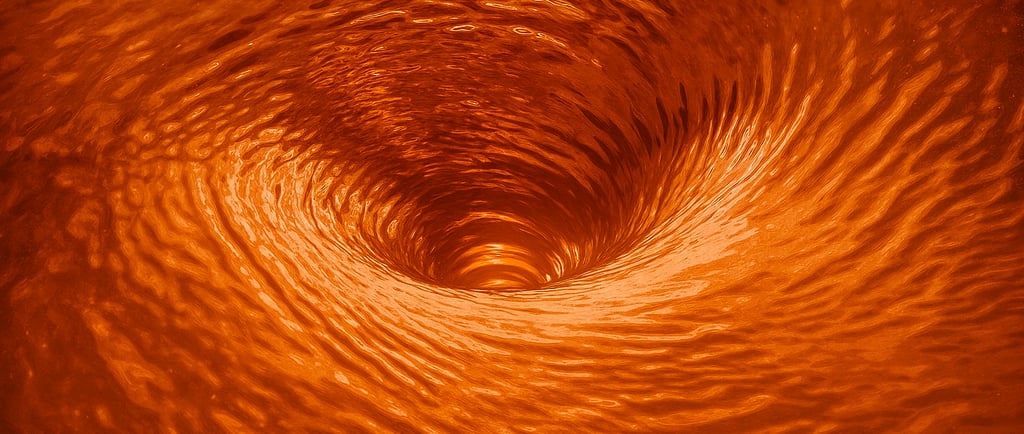How Well Are Materials Mixed in a Reaction Vessel?
Understanding Mixing Efficiency
REACTOR DESIGN
Dr King
8/4/20252 min read


How Well Are Materials Mixed in a Reaction Vessel? Understanding Mixing Efficiency
In the world of chemical and biochemical processing, the phrase “well-mixed” is often assumed — but what does it really mean, and how can we measure it? Mixing efficiency in a reaction vessel is a critical factor in determining reaction rates, product yields, energy consumption, and even safety. Poor mixing can lead to localized concentrations, temperature gradients, and incomplete reactions. Understanding how materials mix — and how to improve that mixing — is essential in optimizing any chemical process.
What Does "Well-Mixed" Mean?
A well-mixed system implies a uniform distribution of all reactants, temperature, and possibly even phases (if multiphase). In ideal scenarios, every point in the reactor would have the same composition and temperature at a given time. In reality, perfect mixing doesn’t occur — so engineers aim for “good enough” based on the process requirements.
Factors Affecting Mixing Efficiency
Several key variables determine how efficiently materials mix in a reaction vessel:
1. Impeller Design and Speed
The type of impeller (e.g., Rushton turbine, pitched blade, anchor) influences flow patterns (axial vs. radial).
Impeller speed directly impacts shear rate and turbulence, both critical for mixing.
2. Reactor Geometry
Vessel shape, baffle placement, and size all influence circulation and vortex formation.
Baffles prevent vortexing and promote better radial mixing.
3. Fluid Properties
Viscosity: Highly viscous fluids mix slower due to reduced turbulence.
Density differences can lead to stratification, making mixing uneven.
Non-Newtonian behavior can complicate predictions.
4. Phase Presence
Solid-liquid, gas-liquid, or immiscible liquid systems add complexity.
Bubble size, gas hold-up, and particle settling can all influence how well materials mix.
5. Scale of Operation
Mixing becomes more difficult at larger scales due to lower surface area-to-volume ratios.
Scale-up requires maintaining similar mixing times and flow regimes (usually via dimensional analysis and similarity criteria like Reynolds number).
How Can We Measure Mixing Efficiency?
There are several experimental approaches to estimate or calculate mixing efficiency. A widely used method is the tracer experiment.
Tracer Experiment: Estimating Mixing Efficiency
Objective:
Quantify how quickly and uniformly a tracer (a dye, salt, or other detectable compound) disperses in the reactor.
Method:
Inject a tracer at a single point (e.g., a colored dye or a salt solution that changes conductivity).
Monitor concentration at different points in the vessel over time using sensors (e.g., spectrophotometers, conductivity probes).
Plot concentration vs. time to observe how fast the tracer homogenizes.
Interpretation:
Mixing time (τ_mix): Time required for the tracer concentration at various points to reach within 5% of the final, uniform value.
Residence Time Distribution (RTD): By analyzing the tracer's exit concentration over time in continuous flow systems, you can understand how long materials stay in the reactor — a proxy for how well they mix.
Other Experimental and Computational Tools
Computational Fluid Dynamics (CFD): Simulates mixing behavior using numerical models. Useful for visualizing flow patterns and optimizing design.
Laser Doppler Anemometry (LDA): Measures local flow velocities.
pH or temperature probes: Can be used in fast-reacting systems to infer mixing quality based on how quickly these values equilibrate.
Improving Mixing in Practice
If poor mixing is detected:
Increase impeller speed (watching for shear sensitivity).
Switch to a more appropriate impeller type.
Add baffles or change their configuration.
Pre-dissolve solids or pre-mix liquids before introduction.
Reevaluate vessel size or shape, especially during scale-up.
Conclusion
Efficient mixing in a reaction vessel is not just about stirring — it’s a complex interplay of equipment design, fluid dynamics, and process conditions. Through smart design and diagnostics like tracer experiments, engineers can ensure optimal mixing — boosting yields, reducing costs, and increasing safety. Whether you're scaling a bioreactor or optimizing a chemical reactor, never underestimate the importance of mixing efficiency.
Equipodia Process Equipment UK Ltd
Customer Services
contact@equipodia.co.uk
+44-191 390 2300
© 2025 Equipodia. All rights reserved.
Quality chemical process equipment.
Registered in England No 16609310
Registered Address: 128 City Road, London EC1V 2NX, UK
